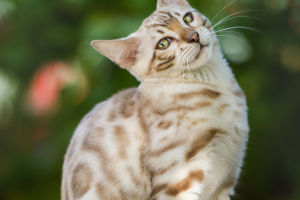The scimitar-billed woodcreeper is a large driving finch with a body length of 26-35 cm. The tail is relatively short and the bill is long and sickle-like.
The bill of young birds is short and straight, gradually curving as they get older. There are thick white eyebrows and zygomatic stripes, brown auricles, and subzygomatic stripes. The upper body is mostly brown and the lower body has numerous white stripes.
Unlike the adults, the juveniles have varying shades of chestnut stripes on one side of the neck and clear cinnamon-colored thighs. Both sexes are similar, but the female is slightly larger than the male.
They mainly inhabit woodland and scrub, particularly in dense thorn scrub forests and palm grasslands. It also inhabits abandoned fields, characterized by open scrub with scattered trees.
They are also sometimes frequent in marginal and agricultural habitats. In some areas, it also inhabits small and medium-sized fragmented woodlands in agroecosystems.
Although the scimitar-billed woodcreeper can forage on tree trunks and branches like other chaffinches, the scimitar-billed woodcreeper feeds mainly on the ground.
This species is very well adapted to using the surface environment and the bent-billed chaffinch uses its long bill to probe for prey in different substrates to a depth of 4-5cm.
It can walk and run when moving along flat surfaces, such as the ground and broad branches. It can also climb trees against vertical tree trunks and branches with some inclination. On the ground, it will also awkwardly jump up with its tail. When disturbed, the bent-billed driving sparrow will swoop and fly to a nearby prominence and perch with its head and throat feathers up.
It feeds mostly alone or in pairs, but also in flocks of 4-10 birds. Often with other species, it is not uncommon. The scimitar-billed woodcreeper driving sparrow feeds on arthropods, insect larvae, frogs, snakes, lizards, and osprey chicks. It also feeds on eggs of different species and also forages for bromeliads and columnar cacti.
There is no specific information available about the scimitar-billed woodcreeper. However, members of the Zostera family appear to be monogamous.
The scimitar-billed woodcreeper bred from September to December. Birds with enlarged gonads have been recorded from October to December. Nesting has been recorded in September and late October. They nest in tree cavities and occasionally in old woodpecker cavities, it may also use an old nest of a red-bellied hornbill.
The Curved-billed Driver's Sparrow is also willing to nest in different types of human-made burrows as long as they are of suitable size. The entrance to these artificial substrate burrows is usually relatively high, usually at 7.5 meters above the ground.
The eggs are white and do not have any other pattern. The eggshell has a smooth and slightly shiny surface. A clutch is usually three eggs and there is no information on the timing of egg laying and it is not yet known how many clutches are laid during each breeding season. The nestling period is estimated to be 21 days.
During that time, both parents give care to the young. Food is brought every 2-5 minutes. The parents will respond to the loud calls of the birds.
According to the IUCN, the current population trend of The scimitar-billed woodcreeper is stable. However, statistical analysis of population trends in any part of its range is still needed.


